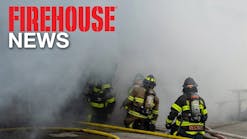PORT ARTHUR, Texas (AP) -- Hundreds of East Texas residents remained trapped by fallen trees or fuel shortages Wednesday as federal relief began to trickle in to the rural-industrial region hit last week by Hurricane Rita.
Thousands Refugees from hurricanes Rita and Katrina, some who had lined up Tuesday night, sweltered for hours in a record-breaking, triple-digit heat wave at a newly reopened FEMA disaster relief center in Houston.
But about noon, as the refugees began to faint from the heat and were carried off by police and other refugees, FEMA shut the line down, saying it was too hot for the people to stand outside and they didn't have enough services to go around. The center offered a clearinghouse of government and private organizations that had help to offer.
In the hurricane-hit areas, FEMA delivered ice, water and pre-packaged meals to residents who rode out last week's Category 3 huuricane, which made landfall at Sabine Pass in East Texas early Saturday.
But local officials, including Port Arthur Mayor Oscar Ortiz and Jefferson County Judge Carl Griffith, whose county includes Beaumont, said FEMA's response has been inadequate.
Griffith said he has asked Gov. Rick Perry to set up a commission that would study the emergency response to Rita. Congress is already holding hearings this week on the federal government's response to Katrina.
Ortiz said FEMA only began distributing suppplies to Port Arthur residents after he asked for it. When the crisis subsides, he said he plans to go to Austin and Washington, D.C., to request low-interest federal loans for people without insurance.
''You know how bureaucracy works. They're not going to offer anything,'' Ortiz said.
He criticized FEMA for staging its command center in Beaumont. ''What the heck is another 20-minute drive to Port Arthur?''
FEMA spokesman Ross Fredenburg in Austin acknowledged that communications between Austin and rural East Texas have been troubled, not only because of power problems but because the chain of information from local to federal authorities isn't efficient.
But Fredenburg said FEMA had set up 27 distribution points in 27 Southeast Texas cities.
''I don't know what could have been done better since the materials were in place before the hurricane. We're doing everything we can to get water and ice to whomever remains.''
About two dozen FEMA workers were readying to fan out across Port Arthur to register people for assistance programs and distribute food and water.
''We're taking in large volumes of people and getting the commodities to them is not an easy process,'' Fredenburg said.
In rural Tyler County, north of Beaumont, volunteer firefighters distributed food, water and ice to hundreds of residents trapped in their homes by fuel shortages or by huge, fallen trees blocking the one-lane, dirt roads out.
Capt. Roger McGee of the Dam-B Volunteer Fire Department said the firefighters had been collecting the supplies on their own until Tuesday, when FEMA showed up to give them pre-packaged meals, water and ice to distribute.
''We're tired. We're wore out, but we ain't giving up,'' McGee said.
Crews are working on cutting trees out of the way, but the thick woods that line the narrow dirt roads slow that process, McGee said.
Ortiz said he expects to allow residents back in his city by the weekend, even though as of Wednesday, the industrial coastal town of about 58,000 had no power, water or sewer services.
Ortiz said he expected water to be restored in the next 24 hours and natural gas lines to be restored in the next few days. Electricity, he said, may not return for three to five weeks, although Entergy, the local utility, planned to have limited power for critical health-care and public safety facilities within a week.
Utility trucks from as far away as Arizona and Pennsylvania were fixing telephone and power lines. Ortiz said that 40 percent of the streets have been cleared of debris.





